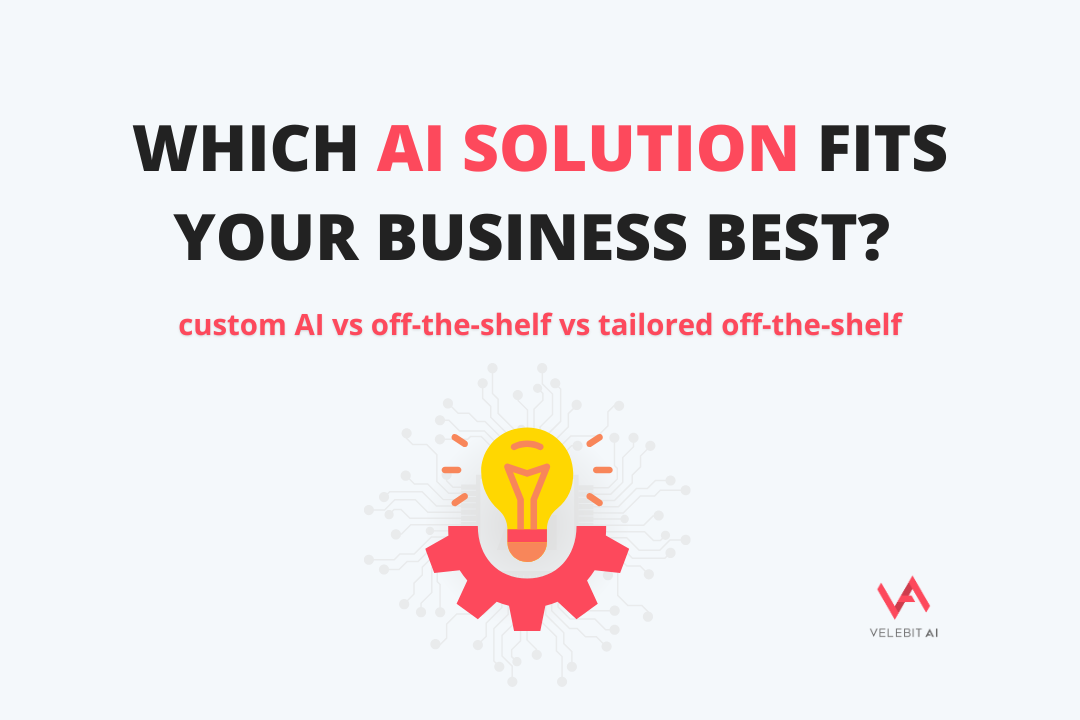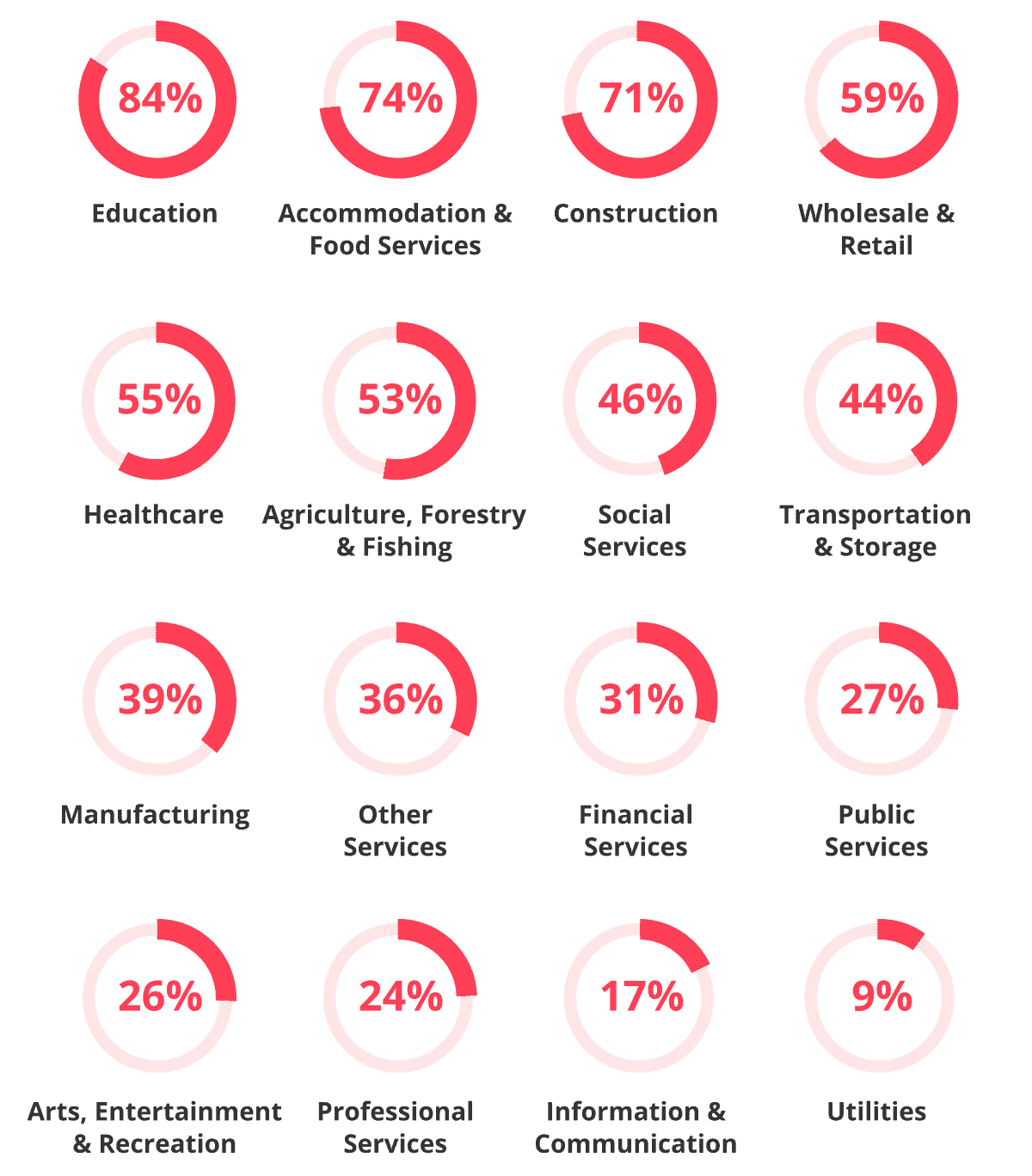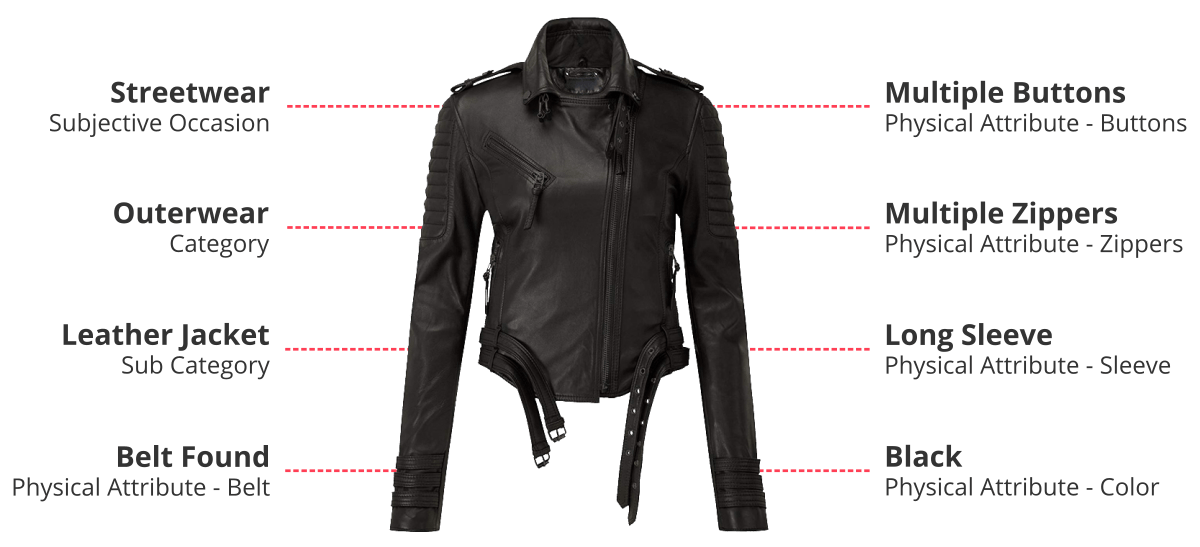


By Bartol Freskura on April 28, 2020
Artificial Intelligence or AI for short, is a topic you cannot escape today and that happens for a good reason. A report from PwC estimates that AI technology will lead to improvements in labor productivity, product value, and consumption that go on to create $15.7 trillion in the global annual gross domestic product (GDP) by 2030 which is a whopping 73% of the GDP US had in 2019.

AI revolution is not limited to just a few industries but is expected to significantly affect a whole spectrum of them. Accenture has done a study concluding that the Wholesale & Retail industry alone will see profits soar 59% above the expected baseline profit levels in 2035 among others.
It seems that Artificial Intelligence has a bright future but to be frank, years 2030 and 2035 are quite far away, and figuring out what kind of value AI technology can bring today or a year from now is a more relevant question.
Due to the situation with COVID-19 and the worldwide imposed lockdowns, many retailers are looking up to eCommerce to save their businesses. With online retail sales estimated to reach $6.5 trillion by 2023, the eCommerce sector was already booming. But since the outbreak, online shopping has been catapulted into complete overdrive as even the largest retailers are struggling to keep up with the demand.
The COVID-19 pandemic has clearly made a huge dent in the perception of eCommerce as people are rapidly starting to embrace online shopping as their default way of acquiring goods. As new eCommerce customers are pouring into online shops, only shops with the best user experience will retain them and profit in the long run. This means that seamless shopping experience is becoming of the utmost importance and AI is here to help with the cause.

Our experience at Velebit AI has shown us there is often a dissonance between what value can we deliver using AI and what customers expect it can be delivered. This does not come as a surprise because there has been an overhype propagated through the media which led people to believe AI technology can magically solve anything that comes to mind.
Does that mean you should pass every AI opportunity someone presents to your business? Absolutely not, but it is important to understand all the benefits and limitations AI technology carries when it comes to eCommerce businesses.
Each AI solution should satisfy the following conditions in order for it to be properly implemented and utilized:
There has to be labeled data for the underlying task. Simply put, no data, no Artificial Intelligence. It’s important to note the labeled data doesn’t have to strictly come from the online retailer.
Sometimes, there are datasets that closely resemble the distribution of data in online shops. AI models can then be optimized on these datasets alone or augmented further with online shop data if existing.
On the other hand, there are AI algorithms that use unlabeled data but these algorithms are usually part of larger AI systems that still need labeled data.
The benefits of AI technology outweigh the costs associated with it.
There is an external or internal team that can take the AI product from the experimentation phase to production.
Instead of explaining the theory behind each of the conditions, we will focus on concrete examples of how these conditions apply to the most beneficial AI powered eCommerce solutions. For the 3rd condition, we will assume the external team of experts at Velebit AI is in charge of development.
Visual Search is an AI powered technology that enables users to sift through millions of items in order for them to find the best visually matching items. After the user gives the query image, the search process takes a few fractions of a second and delivers only the visually and semantically relevant results. Let us now see how the above conditions relate to this product.

Visual Search solution requires data in the form of product images and their corresponding categories. This condition is usually satisfied because most products in the online shop are already categorized into proper categories.
Visual Search results are dependent on the granulation of categories. The more granular the categories are (“iPhone 11” vs just “Mobile Phone”), the more accurate results will be. Specific product attributes also help with granularity making results more refined.
Requiring categories may sound strange because product categories don’t have to do much with the visual perception of products, but AI models use the product category information differently than humans using a thing called embeddings. Embeddings are abstract representations of images that match the visual perception of similar images in people.
Visual Search brings the most benefits to online shops with medium to large product catalogs. Shoppers can easily find a product without explicitly describing product attributes and without using complicated filters. Many established online retailers such as ASOS and eBay have been using Visual Search for some time now and have reported strong results afterward.
eCommerce sites often contain large category hierarchies of their goods and adding new items can become a timely nuisance. Automatic product categorization offers retailers a faster way to find correct categories while reducing errors of putting products into wrong categories.
The AI model will always try to return the most specific category possible, but if it’s not confident enough, it will return the less specific product category as illustrated in the figure below.

Data required for this task is similar to the data required for Visual Search. Instead of image-category pairs, product description and product title - category pairs play a major role here in product categorization.
Product titles and descriptions are more information dense and carry less noise when compared to product images making them more suitable for categorization. Furthermore, some categories are hard to distinguish from images alone (e.g. iPhone 11 Pro vs iPhone 11 Pro Max) so instead of relying on images, the AI model utilizes product descriptions and titles to resolve such cases.
Nevertheless, images can still carry valuable information that is hard to express in text like unique visual patterns, which is why they are also utilized if possible resulting in even better categorization accuracy.
This solution brings multiple benefits. For one, it will significantly reduce the time needed to find the correct category when adding new products (our experience shows 70% time reduction) thus saving retailers precious time. Secondly, mismanaged product categories can severely irritate buyers and the automatic categorization solution can reduce the number of such errors.
The internal search engine is the first element shoppers will interact with when they land on the eCommerce site, and proper product categorization ensures the search results are relevant, making for a seamless shopping experience.
An online catalog provides product names, descriptions, hierarchy, price, supplier, and other related details. Within those categories, granular details like color, style, pattern, neckline, sleeve length, and fit need to be accurate in order for customers to be directed to the right product.
Inconsistent and unstructured tagging of product descriptions and facets lead to broken textual searches on the site and impedes product discoverability for both you as a retailer and the end shopper.

Unlike product categories that are mandatory, product attributes can be optional and can miss detail (black, v-cut, slim-fit casual t-shirt in comparison to just black t-shirt). This leads to circumstances where there is inadequate data for AI models to perform optimally.
Fortunately, AI solutions can alleviate this issue by using a technique called transfer learning. In the context of attribute tagging, transfer learning enables us to use much larger public attribute datasets such as this one to make more generalizable AI models. Generalized models are then fine-tuned on the retailer’s existing attribute data making the final product tagging solution more specific and more accurate.
What’s more interesting is that the transfer learning process can be applied to almost any AI based solution so not everything is lost when data is not abundant.
eCommerce Personalization is the term used by online retailers that refers to the practice of creating personal interactions and experiences on eCommerce sites by dynamically showing content, media, or product recommendations based on browsing behavior, purchase history data, demographics and psychographics.
Personalization in eCommerce comes in many forms from suggesting clothes based on weather, up to offering complementary products.

Because there are many forms of personalization for eCommerce, one type of data cannot fit all the use cases.
The type of data often used in personalization is the user interaction data. This includes recently viewed products and categories, items from abandoned carts, past purchases, past email interactions, loyalty program memberships, etc. Other types of data include context (type of the device used, time and location of access…), visually matching styles, or even external user data.
All this data is then used with one goal - creating unique interactions and experiences suited for the specific customer.
The most obvious advantage of AI eCommerce personalization is the relevance of content for the buyer which results in more time on site, increased engagement, and finally, more sales.
Retailers can also use online customer data to personalize the offline store experience by informing store clerks about online user preferences. And if you’re still not convinced, maybe the fact that poor personalization has cost businesses $756 billion in 2017 will change your mind.
Voice search refers to using spoken language as the medium of interaction with search engines, rather than typing text into a search box. Given the advent of Google Assistant, Siri, Alexa, Cortana, and similar virtual assistants, experts are predicting a rapid ascent of voice-driven digital interactions.
This prediction is backed by clear evidence:
How is voice search different from textual search?
People use different “language” when speaking and texting, resulting in the same semantic, but different syntax. Instead of saying “Nike shoes black 42” like in textual search, customers are more likely to voice search “find me black Nikes of size 42”. Although the same in meaning, site SEO can greatly suffer if you don’t optimize for both.
Is voice search the future of eCommerce too? The statistics say it could be so let’s see how to prepare for it and what benefits it brings to online retailers.

Good news! You actually don’t need any additional data to see the benefits of AI voice search. Although you don’t need any data, the company implementing voice search capabilities such as Google does need it, but this is out of the scope of this article so we won’t go into details.
What you do need however is to work on your online store voice search SEO. We at Velebit AI are not SEO experts so we will refrain from advising on that, but we will give you two insightful articles that talk about voice search and SEO - article 1, article 2.
People are using voice search every day and there is a good chance that voice search becomes the #1 way we search for stuff online. We think optimizing your webshop for voice search is more of a medium to long term strategy that will give your business a strategic advantage in terms of SEO if all the predictions above come true.
Many agree that voice search is a more convenient way of searching, but how effective it is, only the future can tell.
Artificial intelligence is not bulletproof technology. Here we share some common pitfalls businesses fail to realize when working with AI in general including eCommerce.
As you may have already concluded, AI technology can be applied only to a number of use cases. Online retailers must be aware of the limitations and benefits each AI solution brings to the table and using this information make their plan of action.
Although limited in scope, Artificial Intelligence is quickly becoming a key part of eCommerce businesses and an expert AI team can give clear guidelines on what is sensible, and what would just drain valuable business resources.
Data scientists, machine learning and deep learning experts, software engineers, and data engineers are all part of the team that ensures client expectations are met when it comes to AI solutions. Creating your own AI team is a good long term strategy but be aware it can take a long time and lots of resources because good AI talent is much harder to find by than general software development talent. Quality external teams already have AI expert knowledge and thus can deliver results in a much shorter time.

A good team should not only help you with the implementation but also with providing you with the proper initial feedback. Valuable initial feedback includes setting realistic expectations and exploring the feasibility of AI solutions with respect to the conditions we have written above.
The AI boom has generated a lot of interest among enthusiasts who are presenting themselves as experts for AI. While we agree that experimenting with AI has become a commodity, years of our experience have shown that taking an AI model from experimentation to production is a lot more work. 70% of the performance comes from 30% of the effort when it comes to AI solutions, but to make the solution production-ready, you often need 80-100% performance and this is where most of the work is done.
Artificial Intelligence technology relies on valid data to function. Unfortunately, data is dynamic in many cases, meaning AI systems must be updated with new data to continue working properly.
Take for example the automatic attribute tagging. The current database has attributes “black”, “patterned”, “short sleeve”, and “logo”, however, it doesn’t have the attribute “v-neck” because none of your current products has a v-neck. If you then introduce a v-neck product, AI is not capable of detecting that on its own. Instead, the AI model must be fine-tuned again to match the new attribute(s).

Data is not the only variable that changes over time. AI technology is still in its infancy and researchers discover new, faster, and more accurate AI models on a monthly basis. Just like updating regular software to get better performance, AI software should also be updated with new models to ensure your customers have the best experience possible.
We have seen the conditions required for AI solutions to work, 5 technologies that can help existing eCommerce companies, and what to watch out for when opting for AI software.
So, does your online store need Artificial Intelligence? AI tech is still not essential for many eCommerce businesses but the tide is quickly changing in favor of it. Big players like eBay, ASOS, and Amazon have been investing in AI for years now and it has paid off immensely.
A few years from now, AI will become the norm and your business will be left behind if you don’t have the technology ready. Data is the key to AI and implementing proper data storing processes today is a crucial step towards properly working AI systems of tomorrow.
As for eCommerce businesses that already have enough data, we recommend starting small with only one AI solution, and carefully choosing the development team with enough experience such as the Velebit AI team :)
This will keep the initial costs low, get you familiar with the details of AI technology, and still give your customers improved and futuristic shopping experience.
Have you learned something new from this article? If yes, share this article to spread the knowledge by clicking on one of the social media buttons below!
If this article sparked your interest to try AI in your eCommerce business, feel free to contact us and don’t forget to follow us for new updates!
Technical and business lessons from real AI projects
Partner with us to develop an AI solution specifically tailored to your business.
Contact us